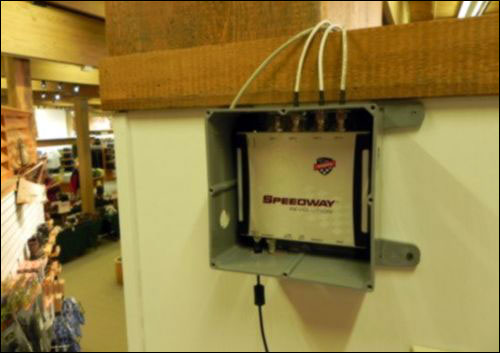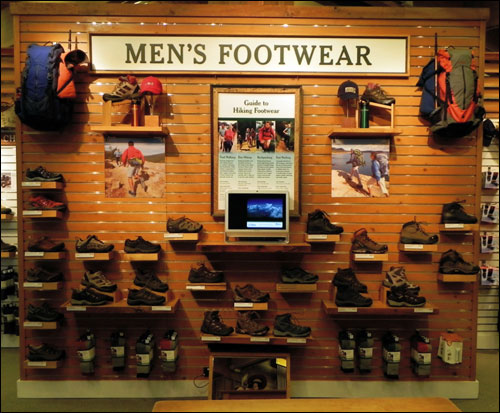Feb 07, 2011Apparel and outdoors sports equipment retailer L.L. Bean is testing a radio frequency identification system that records when an item is picked up by a customer at its flagship store, and activates the streaming of appropriate video regarding that particular product. The system, known as InMotion Retail Marketing, was provided by brand identification technologies firm Pittsfield ID Technologies.
L.L. Bean is one of several retailers installing the system this year. Another is a large electronics retailer that has asked not to be named, but that, according to Pittsfield ID, has plans to deploy the system in the second quarter of 2011, at 300 of its store locations throughout the United States.

Since 1926, Pittsfield ID has provided labels for apparel and other products, as well as electronic article surveillance (EAS) systems for theft prevention in stores. During the past decade, the company had begun providing RFID in labels to enable the electronic tracking of tagged items; Pittsfield ID provides RFID technology to some customers—especially in the commercial-laundry sector , with passive high-frequency (HF) tags for linens, uniforms and other laundry items.
The system installed at L.L. Bean's store in Freeport, Maine, features Pittsfield ID's InMotion software, which analyzes changes in the RF signals that a reader receives from the tags. Based on those changes, the software can then determine if a customer has picked the item to which that tag was attached. The method by which InMotion operates, says Frederick Bleckmann, the company's VP of development, is proprietary.
"One object of the InMotion system is to not change anything that the consumer naturally does during the handling of products in the retail environment," Bleckmann says. Instead, the solution is designed to provide information to a shopper who picks up a tagged product, without requiring that person to press buttons or prompts on a screen.
The system, with the exception of the video system, went live at the Freeport store, in the final week of January 2011. For the first three weeks or so, the system is only tracking how often each shoe is picked up by a customer. Once this data-collection phase is completed, the video system will be put into operation.
The interrogator constantly reads each boot's tag and forwards the read data to the InMotion software, running on a PC installed in the store. The InMotion software analyzes the transmission to determine whether any boots have been moved. If the software discerns that a boot has been picked up, it sends that movement event to http://www.freedomshopping.com Freedom Shopping>'s Freedom SDK software, which manages all media and collects tag-movement data, and makes that information available to L.L. Bean for marketing analysis.

The media information could include a video about a particular shoe, specific details about that product and reviews. If several individuals pick up boots, the system is designed to be "first-come-first-serve," so that the next shoe to be lifted triggers a small box in the lower corner of the screen, thus indicating that its media will play next.
Additionally, the system stores movement data indicating the number of times that each product is picked up, and for how long. That information can then be compared against the point-of-sale records for the same day. In this way, the company can analyze the level of interest that each product generates, whether that interest leads to sales and whether the media content seems to be increasing the number of purchases, when compared against sales garnered without the use of media content.
The read range is approximately 12 feet between the tag and the wall's antennas. If a tagged boot is moved several inches in any direction, or if it is rotated, that motion will trigger the system to display advertising and begin collecting data regarding the boot's movement. L.L. Bean has declined to provide comments for this story, and has not indicated how long it expects the pilot to run. However, Bleckmann says, the retailer has told him that it would evaluate the system's performance at the boot wall, and that it would eventually decide whether or not to deploy the technology permanently, based on the results of that assessment.
Pittsfield ID has also developed a bulk encoding system designed for item-level tagging applications, known as BatchComplete. This solution includes an Impinj RF420 reader, and is designed to encode and read tags at a rate of about 35 tags per second. The company is presently in discussions with several potential end users regarding BatchComplete.


